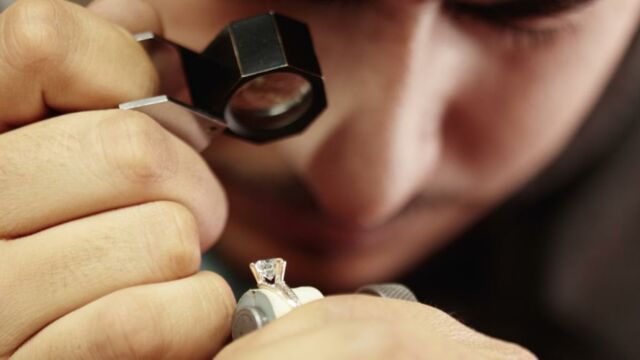Lil Wayne's grillz making you dream? You wouldn't spit on a replica of Ronaldo's earrings? Or is it your better half playing footsies to get you to take out the velvet box and to finally put the ring on their finger? Whatever the reason, the craving for a shining piece of jewelry set with a multi-carat diamond comes at a stark price. But how to explain such a price? How can a year's worth of rent be spent on a 'transparent pebble'?
Discover our latest podcast
Particularly rare diamonds?
Because diamonds are inherently rare? Not necessarily. Let's go back in time about 100 million years ago. These stones form 150 kilometers below the earth's crust. And for good reason, as it is over 1,000°C and the pressure is over 50 kbar. Only in such hellish conditions can liquid carbon crystallize, becoming diamonds that will be forced to the surface through volcanic eruptions and tectonic abduction. The deposits are created.
Thus, if today it is complicated to find naturally coloured diamonds (pink diamond, yellow diamond or even black diamond), white diamonds are regularly discovered whenever new mines are opened. Not to mention that it is now possible to replicate them identically (or almost) in the laboratory. It is less expensive and more ecological.
An exceptional gemstone?
If the white diamond is so expensive, then is it because it is unique, exceptional? Not really either. In reality, it comes very close, in its composition, to another less coveted material: graphite, the same as in pencil lead. Both are composed exclusively of carbon atoms.
It's the way these atoms are structured that changes drastically, making diamond the hardest stone there is, while graphite can't stand up to a sharpener. For this reason, diamond is very useful in drilling and cutting tools, but also in advanced techniques, in order to focus light. And again, synthetic diamonds do the job perfectly, with less financial and human cost.
The diamond ring, a symbol of eternity ... and of stellar marketing
Is the price of diamonds ultimately just marketing? It would seem so. In the 19th century, it was very rare. The scarce supply explained its exorbitant price. But at the same time, a mine was discovered in Kimberley, South Africa. A mine so exceptional that its exploitation would flood the world market. Enough to seriously worry jewellers, seeing their staggering mark-ups wink away.
This is where the diamond company De Beers comes in to save the cash cow. Their stroke of genius: to buy back the mine and limit the marketing of diamonds, in order to exactly meet world demand, and no more. The stones thus still appear to be rare, no matter how pure, and prices may continue to soar. To this day, the company still holds a virtual monopoly on diamonds.
And since when it pours, it rains, De Beers also set out to control demand, with heavy marketing and slogans for its luxury jewellery house, 'Diamonds are Forever.' And they made bank The engagement ring, the tiara and whatever other luxury like watches set with diamonds, it all became the 'must' symbol of timelessness. And also that of bling, the symbol of a certain social status in various communities around the world.
Which explains why today, many are ready to crack their piggy bank for a piece of carbon or other precious stones and gems - sapphire, emerald, ruby and all that glitters! And there you have it, now you know everything!















